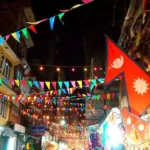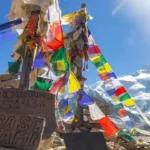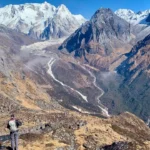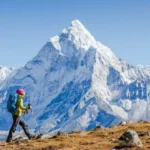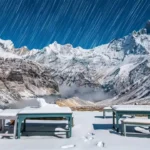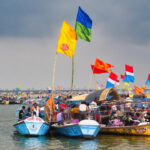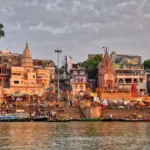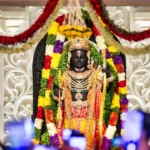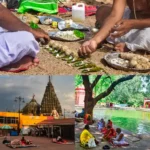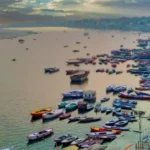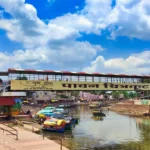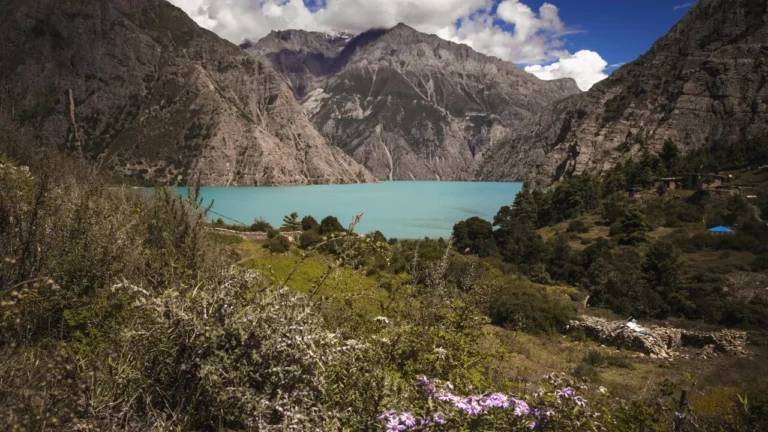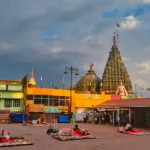Trekking in Dolpo: Routes, Tips & What to Expect
If you’re dreaming of a trek that’s far from the tourist crowds and filled with jaw-dropping scenery, Dolpo delivers. Trekking here is not just a physical journey — it’s a deep cultural immersion and spiritual experience rolled into one epic adventure. But be warned: this isn’t your average tea house trek. Dolpo is remote, raw, and rewarding — perfect for those seeking true wilderness and authentic encounters.
🗺️ Popular Trekking Routes in Dolpo
Here are the top treks that showcase Dolpo’s magic:
1. Upper Dolpo Circuit Trek
- Duration: 20–26 days
- Highlights: Shey Gompa, Crystal Mountain, Sela La and Kang La passes, remote Tibetan-style villages
- Permits: Restricted Area Permit (approx. $500 for 10 days), TIMS card, and Shey Phoksundo National Park entry
- Level: Advanced – high passes over 5,000m and remote camping
This is the ultimate Dolpo experience. It loops through the core of Upper Dolpo, connecting sacred sites with some of the most dramatic terrain in Nepal.
2. Lower Dolpo Trek
- Duration: 10–15 days
- Highlights: Shey Phoksundo Lake, Ringmo village, Do Tarap Valley, lush forests and waterfalls
- Permits: Regular trekking permits and park entry
- Level: Intermediate – high-altitude but less demanding than Upper Dolpo
Perfect for trekkers who want a Dolpo taste without going full expedition mode. You’ll still get stunning views, authentic culture, and the serenity of a lesser-known region.
3. Dolpo to Mustang Traverse
- Duration: 25+ days
- Highlights: Two remote Himalayan regions in one trek, varied landscapes, culture shift from Dolpo to Mustang
- Level: Very challenging – not for first-timers, but a true epic for experienced trekkers
🏕️ What to Expect on the Trail
- Camping, not tea houses: Unlike Everest or Annapurna, Dolpo has no tea house infrastructure. You’ll need to camp and travel with guides, porters, and pack animals.
- High-altitude terrain: Be prepared for long days at 4,000–5,000+ meters. Acclimatisation is crucial.
- Weather shifts: Mornings may be clear and sunny, while afternoons bring sudden wind or cold. Always dress in layers.
- Minimal crowds: On many days, you might not see another trekker at all. It’s just you, the mountains, and the locals.
🧳 Trekking Gear & Tips
- Must-haves: Good down jacket, waterproof boots, UV sunglasses, sleeping bag rated to -15°C, water purification tablets.
- Go with a guide: Due to remoteness and complex logistics, guided treks are highly recommended — and often required for Upper Dolpo.
- Bring cash: No ATMS. Bring enough Nepali rupees to last your entire trek.
- Travel insurance: Make sure it includes high-altitude evacuation.

Trekking in Dolpo is a true off-the-grid adventure — challenging, but incredibly fulfilling. You’ll leave with epic stories, spiritual clarity, and maybe a bit of windburn. 😄
Local Life: People, Villages & Traditions
Beyond the snow-capped peaks and sacred sites, what makes Dolpo truly unforgettable is its people — the Dolpo-pa — and the deep-rooted traditions that guide their daily lives. Life here is shaped by altitude, isolation, and spirituality, and it’s nothing short of remarkable how communities thrive in one of the harshest environments on Earth.
👨👩👧👦 Who Are the Dolpo-pa?
The Dolpo-pa are of Tibetan descent, and their identity is closely tied to both Tibetan Buddhism and the more ancient Bon religion. Their language, customs, and architecture echo Tibetan culture, earning Dolpo the nickname “Tibet outside of Tibet.”
Despite modern pressures, the Dolpo-pa have preserved their way of life through tight-knit communities, seasonal migration patterns, and generational knowledge. Most people are farmers, herders, and traders, relying on what the land provides — barley, potatoes, herbs, and yak products are staples.
🏘️ Village Life in Dolpo
Villages in Dolpo are typically made up of stone and mud-brick houses, often built into cliffsides or terraced hills. These settlements are small, sometimes just a dozen households, and can be days apart on foot.
Some notable villages include:
- Ringmo – Gateway to Shey Phoksundo Lake, with traditional houses and a serene Buddhist monastery.
- Dho Tarap – One of the highest permanent settlements in the world (~4,000m), known for its blend of Bon and Buddhist heritage.
- Saldang – A major village in Upper Dolpo, perched on a desert-like plateau and home to several centuries-old gompas.
Villages are self-sufficient, often with communal grain mills, yak pens, and shared labour during harvest and festival times.
🤝 Hospitality and Community
The people of Dolpo are famously warm and welcoming, despite living such hard lives. It’s customary to be invited in for butter tea, dried yak cheese, or barley-based tsampa. Hospitality is a cultural cornerstone, and guests, especially respectful travellers, are treated with genuine curiosity and care.

Most Dolpo-pa speak Tibetan dialects, but don’t worry — smiles and hand gestures go a long way. If you’re trekking with a local guide, they’ll help translate and deepen your cultural interactions.
🔄 The Netsang System: Old-School Trade Ties
One of the most fascinating aspects of Dolpo’s culture is the Netsang system — a traditional barter network where families pair with trading partners in other regions. Goods like salt from Tibet are exchanged for grains grown at lower elevations. These trade caravans are vital for survival and create lifelong bonds between families across vast distances.
🎉 Local Festivals & Spiritual Life
Dolpo’s calendar is sprinkled with vibrant festivals:
- Losar – The Tibetan New Year, celebrated with prayer, dance, and feasting.
- Shey Festival – Held every 12 years near Crystal Mountain, it’s a major pilgrimage event attracting Dolpo-pa from across the region.
- Chyopa and Mask Dances – Sacred performances held at monasteries to ward off evil and bless the community.
These aren’t staged for tourists — they’re lived traditions, passed down through generations.
Dolpo’s people are the soul of this hidden Himalayan world. Their resilience, rituals, and relationships offer visitors a chance to witness something rare: a culture in harmony with nature, holding strong in a fast-changing world.
Wildlife and Conservation in Shey Phoksundo National Park
Covering over 3,500 square kilometres, Shey Phoksundo National Park is the largest—and arguably the wildest—protected area in Nepal. While Dolpo is famous for its cultural richness, this national park adds an entirely different layer to its allure: a rugged, untouched sanctuary teeming with rare wildlife, medicinal plants, and alpine ecosystems unlike anywhere else on Earth.
🐾 Rare Wildlife in a Harsh Paradise
Despite its high altitude and harsh terrain, Shey Phoksundo National Park is biologically diverse, especially in its role as a haven for endangered species. Some of the wildlife here is incredibly rare and elusive, making a sighting a genuine thrill for adventurers and conservationists alike.
Here are a few species that call this region home:
- 🐆 Snow Leopard – The elusive “ghost of the mountains.” Dolpo is one of the last strongholds of this critically endangered predator.
- 🐏 Blue Sheep (Bharal) – A key prey species for snow leopards and commonly seen on the cliffs around Phoksundo.
- 🦊 Tibetan Wolf & Red Fox – Shy, intelligent predators adapted to the region’s thin air and barren terrain.
- 🦅 Lammergeier (Bearded Vulture) – A massive vulture with a 10-foot wingspan, known for feeding on bone marrow.
- 🦌 Musk Deer, Himalayan Tahr, Himalayan Monal – Unique species adapted to the cold, dry trans-Himalayan ecosystem.
🌿 Flora, Medicinal Plants & Alpine Ecosystems
The park isn’t just rocks and snow — it supports a wide variety of alpine vegetation. Depending on elevation, you’ll walk through:
- Pine and juniper forests
- Birch and rhododendron groves
- High-altitude meadows filled with wildflowers
Dolpo is also rich in medicinal herbs, like Yarsagumba (a fungus-caterpillar hybrid valued in traditional medicine), which locals collect during the summer months. Sustainable harvesting is a major concern as global demand grows.

🌱 Conservation Challenges
While the isolation of Dolpo has helped preserve its natural wonders, the region still faces conservation pressures:
- Climate change is altering snow patterns and water availability.
- Unregulated tourism and trekking can strain fragile ecosystems.
- Illegal poaching and overharvesting of herbs pose risks to both animals and local livelihoods.
To address these challenges, local communities, conservation groups, and the Nepalese government are working together. Initiatives include:
- Community-based anti-poaching units
- Environmental education programs in villages
- Sustainable tourism guidelines to limit environmental impact
🤝 Culture and Conservation Go Hand-in-Hand
What’s beautiful about Dolpo is that spiritual beliefs often reinforce conservation. Many areas—like Crystal Mountain and Shey Gompa—are considered sacred, and locals view harming the environment there as a spiritual offence. This intertwining of faith and ecology helps create a naturally protective ethos around the land.
Dolpo’s wild side is just as magical as its cultural soul. For trekkers and travellers, it’s a rare opportunity to witness nature and tradition working together, preserving a Himalayan wilderness that still feels timeless.
Challenges of Isolation: Health, Education & Modernisation
Dolpo’s remoteness is part of its charm — but it also comes at a cost. While the isolation has helped preserve its landscapes and traditions, it also means that necessities like healthcare, education, and infrastructure are extremely limited. For the people who call Dolpo home, daily life is a delicate balance between survival, self-reliance, and resilience.
🏥 Healthcare: Far from Help
Imagine living days away from the nearest clinic. In Dolpo, that’s the reality.
- Most villages lack permanent medical facilities. When illness or injury strikes, locals rely on traditional healers, herbs, or must trek for days to reach basic medical aid.
- Emergency evacuations by helicopter are rare and expensive, often out of reach for locals unless NGOS or international aid groups intervene.
- Childbirth, infections, and altitude-related illnesses pose serious risks due to the lack of trained professionals and modern equipment.
Some organisations have established mobile health camps or seasonal outreach clinics, but these are infrequent and dependent on funding and weather.
🎒 Education: A Long Walk to Learn
In Dolpo, access to education is improving slowly, but it’s far from equitable.
- Many villages have small primary schools, often run by a single teacher with minimal resources.
- For higher education, children often have to leave their families and move to cities like Nepalgunj or Kathmandu — if their families can afford it.
- Harsh winters and poor infrastructure mean that school attendance drops significantly during colder months.
- There’s also a language gap — lessons are often taught in Nepali, while many Dolpo children grow up speaking Tibetan dialects or local tongues.
Still, non-profits and monasteries play a major role in bridging this gap, offering scholarships, boarding opportunities, and hybrid curricula that honour local culture while introducing modern subjects.

🚫 Infrastructure: The Price of Being Off-the-Grid
Dolpo has no highways, no railways, and extremely limited power.
- The entire region is accessible only on foot or small aircraft, making the transport of goods expensive and unreliable.
- Most villages rely on solar panels or small hydropower units for electricity, often just enough for a few light bulbs and a radio.
- Communication is patchy, with limited or no mobile service in many areas. Some communities now use satellite internet for essential messaging and education.
Infrastructure development is a logistical nightmare here, not to mention controversial, as roads and modern construction could disrupt Dolpo’s fragile ecosystems and culture.
⚖️ The Crossroads: Preserve or Progress?
Dolpo stands at a crossroads between preserving its traditional identity and embracing modernisation to improve the quality of life. Many locals — especially younger generations — want better schools, healthcare, and opportunities. But they also fear losing the culture and harmony that define their homeland.
The path forward lies in sustainable development, where outside support empowers local communities without steamrolling their traditions.
Dolpo’s isolation has carved a lifestyle of incredible strength and simplicity, but also undeniable hardship. Understanding these challenges helps visitors appreciate not just the beauty of the region but the grit and grace of the people who live there every day.
Why Visit Dolpo? Final Thoughts & Travel Tips
If you’re the kind of traveller who’s drawn to untouched landscapes, ancient cultures, and real adventure, Dolpo isn’t just a destination — it’s a calling. It’s the kind of place that changes you, grounding you in nature and culture in a way few places on Earth still can.
🌄 Why Dolpo Stands Out
- It’s wild and raw. You won’t find tourist crowds or Wi-Fi cafes — you’ll find open skies, silence, and sacred mountains.
- It’s culturally deep. The blend of Bon and Tibetan Buddhism, ancient trade networks, and age-old festivals makes Dolpo feel like a living museum.
- It’s a true adventure. Trekking in Dolpo challenges your body and expands your mind. Every step through high passes and forgotten valleys is earned — and unforgettable.
In short? Dolpo is one of the last frontiers of authentic travel.
🧳 Travel Tips for Visiting Dolpo
Here’s what you need to know before you go:
- Plan ahead
Permits (especially for Upper Dolpo) take time and coordination. Work with a trusted trekking agency familiar with remote region logistics.
- Train your body
This is not a casual walk. Prepare for high altitudes, long trekking days, and zero modern comforts.
- Pack smart
Essential items include:
- Layers for temperatures ranging from warm sun to freezing nights
- Quality sleeping bag (-15°C rated)
- Purification tablets or filters
- First aid kit with altitude meds
- Cash — no ATMS or digital payments here
- Respect the culture
Be mindful of religious sites, ask before taking photos, and learn a few basic phrases. A little respect goes a long way in Dolpo.
- Go with intention
This is a region where slow travel wins. Don’t rush it — take time to engage, reflect, and soak it in.










